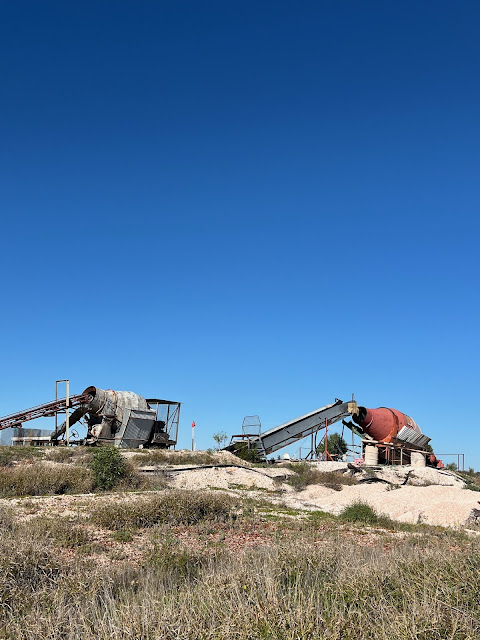We’ve been so occupied over the last couple of days that the days have simply flown by. As well as sifting through opal dirty, we’ve been treated to some great talks that have taken us back in time to the Cretaceous-Jurassic period and earlier. Lectures set the scene and getting to look at and handle some beautiful samples of opalised fossils has guided us on what to look for in our search for fragments. Already our small band of ‘diggers’ has found some terrific things - between us we have found a pieces of opalised turtle shell, fossilised molluscs and lots of other things including bones and plant matter. Quite a few yabby buttons have been found. For those who may not know these are fossilised calcium deposits from yabbies (they accumulate minerals internally to rebuild their shells after they moult). It’s another world entirely we’re learning about.

We’ve spent many hours at ‘the Shed’ sifting through tailings but also visited a mine where we descended to the Opal level which is 20 odd metres below ground level - lots of panting coming back up those dastardly steps. After we’d caught our breaths, it was back again to sifting through more tailings looking for fossil fragments. That’s why we’re here - to find fossils.
 |
| A lovely bit of colour - perhaps fossilise plant |
A treat for me and Lindsay was a visit from Dr Elizabeth Smith (palaeontologist) who we met in April. She gave us a marvellous talk/‘show and tell’ on mammalian fossils which are extremely rare and very precious. Very exciting stuff and internationally significant (we’re a part of it!). Elizabeth is a co-founder and driver of the new Australian Opal Centre. This innovative project currently under construction, is the biggest community project in Australia. It’s a big project because the story of opal in Australia is big. Opal carries mighty stories from deep time. It tells us about the evolution of plants and animals here and right across the southern hemisphere, about our inland sea and its shores 100 million years ago, and about the enormous changes between then and now.
 |
| Platypus skulls - L: ancient, R: modern. Little pressure to change |
That afternoon we went out ‘specking’ in the field to a stunning remote spot where we scrabbled through the dirt on our hands and knees. Later that day we discovered pains in places we’d forgotten about nevertheless it was a great experience looking for plant fossils. Despite all the warnings moi got a Hudson Pear multiple spike in the shoe. Totally nasty things but Lindsay had packed the pliers in the car and managed to get it all out of my shoe – before standing on one himself!
 |
| An expan |
 |
| A curio |
 |
| Flowers and lichen surviving among the trailings |
 |
| Deliciously remote. |
We were pretty pooped but a shower rallied us a little so we headed out pre-dinner lecture presented by palaeontologist Prof Michael Archer from the School of Biological, Earth & Environmental Sciences at the Uni of NSW. Fantastic, riveting inspiring lecture. Had he been one of my lecturers I would have become a palaeontologist rather than a neuroscientist Isuspect.



































